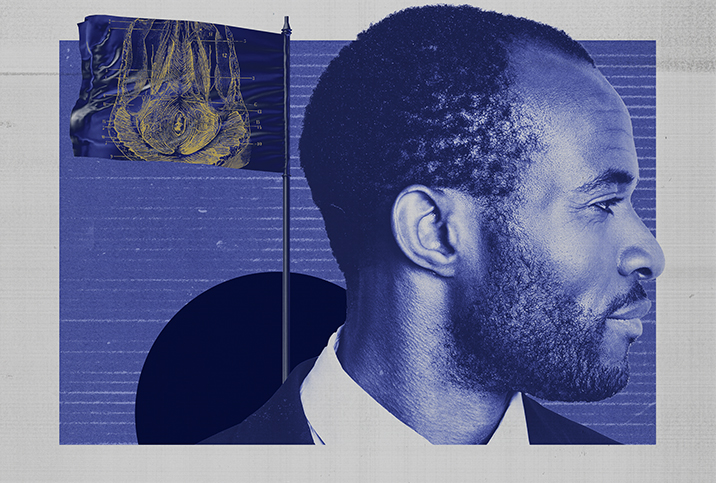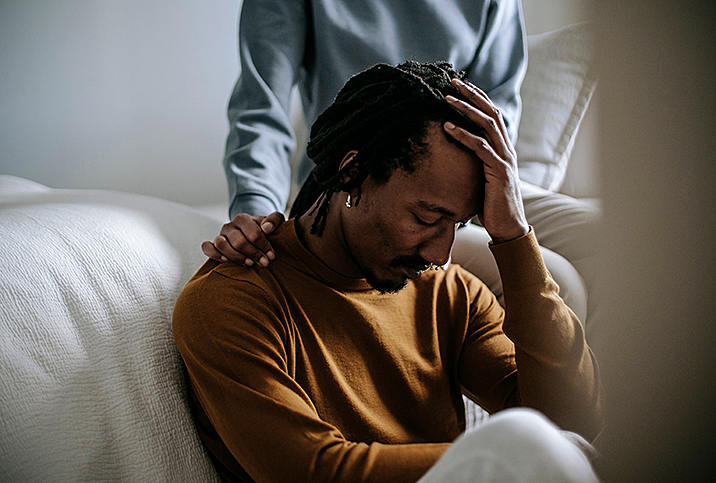Run This Up Your Flagpole: A Salute to the Bulbocavernosus Muscle

When you first learn about male sexuality, it all seems straightforward: The stickee-outie thing wants to visit exciting new places, while the roundy, jumbly things make sperm and hate violence.
That's pretty much it, right?
It turns out there's a lot more going on down there. More parts, more functions, more activities.
One behind-the-scenes trooper that plays a huge, but underappreciated, role in male sexual response is the bulbocavernosus muscle. The what? Find out what it is, what it does, how you can keep it healthy and why you should know more about it.
What does the bulbocavernosus muscle do?
The bulbocavernosus muscle, sometimes called the bulbospongiosus muscle, is part of the group of pelvic floor muscles. They support continence, hold your lower organs in place and are integral to the healthy function of the male reproductive system.
"These are the muscles on the inside of the pelvis that are attachments from the big muscle groups of the legs, the lower back, the buttocks, etc.," said Petar Bajic, M.D., a urologist specializing in sexual health and male genital reconstructive surgery at Cleveland Clinic. "They're really important for function."
The bulbocavernosus muscle wraps around the bulb of the urethra where the penis begins deep inside the body. It contributes to successful sexual function in a couple of critical ways.
The bulbocavernosus is one of the muscles in the perineum, the area between the anus and the genitals, explained Amy Pearlman, M.D., the director of men's health at the Carver College of Medicine at University of Iowa Health Care.
"Those muscles and the ischiocavernosus muscles sit right on either side [of the base of the penis], so those muscles need to be working appropriately to keep blood in the penis," Pearlman said. "It's one thing if you bring blood in, but you have to keep it in, as well."
In addition to containing blood in an erect penis, the bulbocavernosus muscle also squeezes down on the penis when the man has an orgasm, forcing the semen out of the urethra. These spasms are what men associate with the pulsing sensations of pleasure at the peak of the orgasm.
But a bulbocavernosus muscle that isn't functioning correctly can cause a whole host of problems in the bedroom: erectile dysfunction (ED), difficulty reaching ejaculation and pain during ejaculation.
"Those muscles spasm when a man has an orgasm and expel the semen outward," Bajic said. "One of the most common symptoms I hear from men who have [pelvic floor issues] is they have pain or discomfort with ejaculation."
Other bulbocavernosus muscle functions
Another job the bulbocavernosus muscle does is help eliminate urine from the urethra. If you notice you have a post-urination dribble, you can blame your bulbocavernosus.
"So if it's not working appropriately, people can have post-void dribbling where they urinate and they feel like they're done, and they walk away from the urinal, and dribble, dribble, dribble," Pearlman said. "So we'll tell people to 'milk' their perineum, to take their fingers and milk that area between the scrotum and the rectum to get all that urine out that's hanging in that area."
By pressing upward on the perineum after urinating, you can manually force out any extra urine your bulbocavernosus has missed, Pearlman advised.
How can you improve its function?
A number of factors can affect how well your bulbocavernosus muscle works. People who have had prior radiation treatment or surgery in the pelvic region may have weaker muscles down there. Just as with biceps and pectorals, the bulbocavernosus muscle is simply not as robust in some people as in others.
But as with other muscles, aging, stress and neglect can affect the bulbocavernosus.
"Nobody exercises that muscle," Pearlman said. "Nobody knows how important it is. That's why I send a lot of people to pelvic floor therapy, so they get to know their body, they get to know where this muscle is, what can you do with it, and understand that you actually have incredible control over your body when it comes to urination and sexual health. Nobody ever told you that information."
Pearlman was quick to point out the importance of consulting with a pelvic floor therapist before launching into Kegel exercises or other strengthening programs. Tensing the pelvic floor muscles is often the opposite of what a man needs. Guys who spend long hours sitting or feel a lot of stress may need to learn how to relax and loosen these muscles rather than flex them.
Luckily, you already know someone who has access to the affected area: you.
"It's located in a place that people can reach themselves," Pearlman said. "It's OK to get in there like pain in any part of the body and do massage techniques. I have a lot of people who sit on tennis balls right in that area because that can get right in there."
Men can get to know their body, and understand when it's appropriate to relax the bulbocavernosus muscle and when it's appropriate to strengthen it, she added. They don't need to be afraid of their body if they have pain in that area.
Unless Mark Zuckerberg's "metaverse" is secretly way ahead of where it appears to be, we're likely to have only one body in this lifetime. Learning in detail how our body works and how to help it work better can go a long way toward giving us a happier, healthier time while we're in it.


















